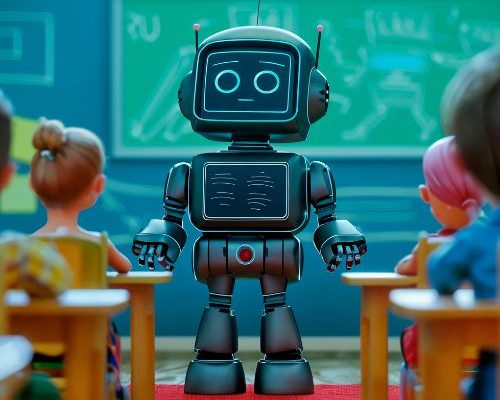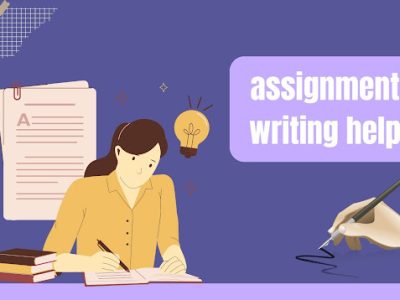Introduction
Artificial intelligence (AI) is transforming all industries and education is not an exception. With technology changing the face of classrooms, AI is emerging as an indispensable means towards personalised learning, intelligent content production and administration productivity.
A chatbot that responds to student inquiries or an algorithm that designs lessons to a specific student is just a feeble example of how the AI in education changes the way we teach and learn.
This ultimate guide will cover the use of AI in education, advantages, disadvantages, tools, world projects, and trends of AI in the future.
History and Evolution of AI in Education
The history of integrating AI in education reaches the 1960s when cutting-edge solutions such as the SCHOLAR system, an intelligent tutoring system on the geography subject, was introduced.
This was succeeded by PLATO (Programmed Logic for Automated Teaching Operations), one of the earliest systems of computer-aided instruction.
- Adaptive learning and expert systems were utilized later in 1980s-1990s and this became the basis of the current AI platforms.
- In the 2010s, with the advancement in machine learning and the widespread availability of cloud computing resources, other types of tools, such as Knewton and Duolingo, began to deliver personalized content in large quantities.
- The 21st century further improved AI with machine learning and big data, allowing the systems to understand a student’s behavior, anticipate the outcomes, and give individual responses and feedback.
In the present, AI forms the backbone of digital learning settings in the form of generative AI, adaptive learning platforms, and virtual teaching assistants.
How is AI Used in Education?
1. Individual Learning Paths:
AI adjusts the content to individual student learning, type, rhythm, potentials, and deficiencies.
- AI keeps the real-time tracking of the performance of student involved
- Recommends materials such as videos, quizzes, or reading.
- Levels of difficulty adjusted for responses
Example: Knewton Alta takes advantage of AI to personalize math and science teaching, relying on individual knowledge, and learning becomes more effective and to the point.
2. ITS Intelligent tutoring systems (ITS):
These systems resemble the tutoring of a human being by providing step guidance, explanation, and consultation in real time.
- Determine logic fallacies
- Immediate clue or follow-ups
- Permit mastery gradation
Example: MATHia 1-on-1 AI tutor by Carnegie Learning personalizes lesson presentation to feedback by students.
3. Chatbots And Virtual Assistants:
Bots using Artificial intelligence respond to student requests 24/7 about homework, due dates, or anything in general.
- Help in piloting LMS (Learning Management Systems)
- The common questions are answered in the process of admission or enrollment into a course
- Pull up students regarding a task or exams
Jill Watson is one example developed by Georgia Tech, which is a virtual TA (Teaching assistant) that is used to answer the queries of students on the internet.
4. Intelligent Schedule & Course Management:
AI systems can take care of schedules, propose the best schedules, and even auto-allocate groups or projects based on the profile information of the students.
Example: resource allocation and course planning are automated in schools and colleges due to the use of AI-based websites, such as Timetabler and PowerSchool.
5. AI in Remote & Online Learning:
As a aftermath of the COVID situation, AI has been instrumental in the scaling of online learning, especially with:
- Cheat-detection software (e.g., Proctorio)
- LMS platforms with an AI add-ons, such as Edmodo or Moodle, as examples of adaptive LMS
- Course recommendations on such sites as Coursera and edX
Applications of AI in Education
Some of the most notable ones are:
- Intelligent Tutoring Systems (ITS): Computer programs such as Carnegie Learning take students, step by step through problems and adjust as a result of answers.
- Chat bots: Chat bots set up by Georgia State University, a chat bot branded as Pounce that decreased summer melt among new students by 21 percent.
- Intelligent Content production: Firms such as Content Technologies Inc. produce individual textbooks through the help of AI.
- AI Learning Management System (LMS): Canvas and Moodle allow the use of AI to provide analytics and course customization. What is more, Duolingo employs AI that allows making challenges individual, which leads to more active users.
- Learning analytics: Based on a pattern of data, predict students outcomes and refine their instructional strategies. Coursera and edX monitor the activity of students to provide targeted material.
Use of AI in K-12 and Higher Education
AI in K-12 Education
The use of AI tools in the K-12 sphere assists in the timely discovery of learning barriers and aligning instruction with developmental requirements.
- Math and reading are adaptive learning
- Speech recognition for reading fluency improvement
- Gamified learning environments to keep attention levels high.
AI in Secondary Education
At the middle and high school levels, AI assists in the mastery of the subjects, preparing them individually and enhancing their skillset.
- Individualized coaching and exam instructing
- Catching and improving writing
- Early warning systems for academic performance
AI in Higher Education
In higher education, AI is used for smart content curation, plagiarism detection, and online proctoring during exams.
- Automate grading
- Make plagiarism checks
- Offer online academic advising (i.e., personalized IBM Watson-based assistants)
AI in Higher Education
Artificial Intelligence professions by converting the way universities conduct studies, give lectures, interact with students, and run operations.
1. Advanced Research:
- Used in academic research, AI can speed work up by scraping large data sets and identifying trends and patterns, as well as conducting simulations and modeling. Uses such as:
- Reading of academic journals with the use of natural language processing (NLP)
- Predictive modeling with AI to conduct experiments and test hypotheses.
- Automate research and create data visualizations.
Tools used:
- Iris.ai: Use AI mapping to help researchers find relevant academic papers.
- Semantic Scholar: AI research database from the Allen Institute.
- Scite.ai: Analyzes citations and context to assess the credibility of research.
2. Personalized Learning:
AI adapts content to a student’s preferences and behaviors — as well as their strengths and weaknesses to improve learning outcomes. Uses such as:
- Adaptable course content and pacing.
- AI-based feedback and recommendations.
- Intelligent tutoring systems.
Tools used:
- Kewton Alta: Provides adaptive learning in college-level math and science.
- Coursera and edX Use: AI to suggest personalized learning routes
- Smart Sparrow: Allows the instructors to create AI-driven personalized learning activities
3. Student Services:
AI enhances the student experience outside of the classroom through:
- Chatbots and virtual assistants (e.g., Georgia Tech’s Jill Watson, powered by IBM Watson),
- AI advisors to help them select courses and plan a path forward in their career,
- 24/7 support for frequently asked questions (FAQ), deadlines, and navigation,
- These services help students feel better served while lightening the administrative burden of the institution.
Tools used:
- Jill Watson (Georgia Tech): An AI-powered teaching assistant that sits on IBM Watson
- Revolution UC’s Chatbot: Does just about anything related to admissions and enrollment
- Purdue’s Course Signals: Alerts students and faculty to performance trends flagged by AI
4. Administration:
AI supports the operational work of the institution by:
- Automated admissions processing and document review,
- Predictive modeling for forecasting, enrollment and resource needs,
- AI-driven scheduling systems to optimize class and exam scheduling to limit leave, dull moments, and capture appropriate space for lectures.
Tools used:
- Gradescope: Places such as Stanford and MIT use Gradescope to automatically give grade.
- Ellucian: An AI student information system to manage admissions, enrolment and course management
- AdmitHub (now Mainstay): AI chatbot guiding students to make and complete an application and enrollment process
Artificial Intelligence Tools for Education
| Tool | Purpose | Who Uses It? |
| Gradescope | AI-assisted grading of assignments and exams | Professors |
| Socratic (Google) | AI homework help via mobile phone cameras | Students |
| Knewton | Adaptive learning platform for personalized paths | EdTech firms |
| Otter.ai | Automatic transcription and note-taking | College students, educators |
| Querium | AI-driven STEM tutoring | High school and college students |
AI for Teachers and Administrators
Artificial Intelligence is not only changing the learning method of students but also changing the teaching method of teachers and the management of educational institutions.
Automated routine work, data analysis, and provision of intelligent recommendations allow educators to invest more in creative teaching and interaction with children, instead of administrative workloads.
The role of AI in support of teachers:
- Automated Grading: Grading systems such as Gradescope and ZipGrade exploit the use of natural language processing to grade multiple choice questions, fill in the blanks, and even short answers without human intervention.
Example: Gradescope, developed at UC Berkeley, has the potential to reduce grading time 70% so instructors can grant students more mentorship.
- Curriculum Suggestions: Technologies based on artificial intelligence are used to examine the effectiveness of students and suggest lesson plans or changes in content to suit the needs of the classes.
Example of Century Tech (UK-based): AI helps teachers to create better directions by proposing curriculum pathways based on what students understand.
- Individualized Care of the Students: Individual attention can be given based on dashboards, which can show teachers struggling students or students showing great performance.
Case in point: AI by Knewton determines the strengths and weaknesses of every student so that a teacher might, in turn, offer specific interventions.
- Smart feedback: Certain AI applications may aid educators in providing analytical, constructive commentary on the works or student writing.
Example: The Feedback Studio in Turnitin is not a plagiarism checker but also an AI tool that provides educators with information on writing.
The way AI benefits Administrators:
- Scheduling and Timetable Automations: AI can create optimal schedules using such factors as teacher availability, room size, and student course selection.
Example: Classter is a school management system that automates the work of administration, such as scheduling and reporting.
- Resource planning and Budget Forecasting: AI uses a combination of enrollment patterns and usage of resources to be smarter across staffing, materials, and cost distributions.
- Staff bots Student Services: Universities currently use chatbots based on artificial intelligence to respond to enquiries about admission, fee payment, and course registration.
Example: George State University chatbot Pounce was beneficial not only in reducing the monthly melt but in answering thousands of questions asked by students, increasing the enrollment rates.
AI in Student Assessment and Feedback
AI systems can provide feedback almost immediately, indicate errors, and state suggestions for improvements. These systems can also include
- Adaptive testing: where the questions change level of difficulty based on how a student responds.
- Near Instant Feedback: Platforms like Knewton or Century give feedback and insights almost instantly.
- Writing Evaluation: AI will score a piece of writing on elements such as grammar, logic, and structure.
Such tools as Century Tech employ the use of AI to monitor learning gaps and propose revision modules. Further, quizzes based on instructions are produced by Quillionz. These systems will guarantee more efficient and data-based appraisals that are more personalized.
Examples and Case studies-Round Ups
- Carnegie Learning (USA): An AI-based math platform applied in more than 1,500 schools. It combines AI algorithms and cognitive science in personalized direction.
- Squirrel AI, China: Has trained more than 1 million students with the help of AI teachers that could detect knowledge gaps more quickly than flesh teachers.
- India: Byju.s: It uses AI to tailor video lessons according to the performance and preferences of the students.
Such success stories reflect the potential of AI to scale up on quality education within the world.
Recommended AI Education Websites & Platforms
Here are some examples of reliable platforms that utilize AI in positive ways:
- Khan Academy (Khanmigo): Khanmigo is an AI tutor by Khan Academy that uses GPT to offer personalized learning and explanations of concepts to K-12 students and web-based teacher assistance.
- Duolingo: AI is used in Duolingo to customise language learning. It has smart feedback and interactive discussions next to conventional learning strategies as part of GPT-4-powered Duolingo Max.
- Quizlet: Quizlet takes advantage of AI to develop adaptive study buckets, flashcards, and practice tests. With learn mode, it is based on performance and detects the weak areas to uphold revision.
- Socratic by Google: The free AI application Socratic finds solutions to academic problems through the photography input and provides explanation steps (mathematical, scientific as well as human), with the help of Google AI.
- Century Tech: Century Tech is a combination of AI and neuroscience that is used to provide individual learning paths and real-time teacher feedback. It is heavily employed in the UK both in schools and at the K-12 level.
- Coursera: As an AI-based course recommendation and skill monitoring platform, Coursera provides people with custom learning experiences at the leading universities in the fields of AI, data science, and business.
- edX: edX offers online courses with AI learning tools that are offered by such schools as MIT and Harvard. These features include progress monitoring, responsive testing, and individual recommendations.
- Gradescope: Gradescope is an automated office grading system that uses AI to group or categorize answers similarly and rubrics effectively. It is very common in the university so that the exams are marked differently to save time.
Opportunities and Benefits of AI in Education
- Personalization of Learning: Learning content is adjusted to the speed of students.
- Efficiency: Automation reduced the workload on the part of teachers.
- Accessibility: Helps with students with disabilities, speech-to-text on-screen AI captions, etc.
- Data-Based Decision Making: Is capable of predicting and reasoning pathways and learning demands of students.
- Continuous learning: The use of chatbots and tutoring tools is possible at any time.
Challenges and Disadvantages of AI in Education
Although the effects of Artificial Intelligence in the field of education are quite positive, significant barriers and shortcomings should be taken into consideration. To make sure that AI is responsibly and positively used in the classroom and other parts of the institution, it is necessary to pay targeted attention to such shortcomings.
1. Overreliance on Technology
With the help of AI tools, teaching and learning can be easier, but when people lean on the AI too much, it will result in:
- Less human contact in the classrooms, wears out the emotional intelligence and social learning.
- Students are taking on an excessive reliance on the AI tutors and assistants at the expense of the developing critical thinking and problem-solving skills.
- Teachers being coerced to utilize the dashboards and data as opposed to sense and experience in the classroom.
Example: Certain schools that utilise AI-powered learning technology such as Squirrel AI have said that students have missed the traditional classroom discussion especially in courses that involve human context such as literature or ethics.
2. Algorithmic Bias and Inequity
Artificial intelligence is just as biased as the data they are trained on. In case the training data shows social, cultural or gender biases, the AI system is likely to unintentionally:
- Bias recommending content
- Misinterpret student responses due to language or cultural differences
- Punish some categories (namely, ESL students or neurodivergent students)
Example: an MIT study in 2021 discovered that most AI education tools performed poorly in scoring non-native English speakers because of accent or phrasing variance to the detriment of fairness in the assessment.
3. Cost of Implementation and Maintenance
To implement AI systems in the educational sector, one will need to invest heavily in:
- Licenses and subscriptions to software
- Wi-Fi and Smart machines
- Training and IT Support are given to teachers
This may increase the digital divide between public schools and private schools, particularly in rural or less economically endowed regions.
UNESCO found that in the case of sub-Saharan Africa, electricity is present in only 43 percent of schools, and digital infrastructure to support AI-based tools is yet to be considered.
4. Lack of Teacher Training and Understanding of Digital Competence
Most teachers are not ready to take advantage of AI systems even when schools decide to implement such systems. Barriers include:
- The technology may take their jobs as the fear of losing their jobs to technology is one of the key reasons why people are afraid of the new technology.
- Multifaceted interface or ambiguous instructional advantages
Example: In a 2022 Education Week survey, 63 percent of U.S. teachers reported being only somewhat or very unprepared to incorporate AI tools in their classrooms.
Ethical Considerations in AI-Education Integration
Here are the significant ethical considerations:
- Algorithmic Fairness: Will their will be bias or issues in grading or predicting belongingness in learning?
- Transparency: How can we explain the action-taking AI’s decisions?
- Human Monitoring Oversight: Is AI used to support the educators or take their place?
We need to be responsible about AI use at educational institutions – we need educators, ethicists, and policymakers to be involved.
Data Privacy & Security
Student data includes academic data from educators about the performance of students, along with any behavioral tracker, and personal data. Any exposure or misuse has the potential to cause extreme harm. It is expected that educational institutions work with them in mind
- Use encryption and securely store.
- Use informed consent to have students optos into the use of data.
- It is important that they comply with e.g., FERPA (USA), GDPR (EU) and DPDP Act (India).
Every AI system must disclose their actions concerning the use of data and their data storage.
Global Context and Government Initiatives
- Government Initiatives: Education in K12 and Universities:
- India: with the NEP 2020, AI and EdTech in K12 and universities is encouraged.
- China: Heavy investments to introduce AI tutors into rural schools.
- Finland: Provides free access to AI education through the “Elements of AI” program.
- United States: The Department of Education’s “AI in Education policy” is in place to promote ethical innovation and develop AI research and development.
Governments from around the globe are laying the groundwork to make AI in education equitable and regulated.
AI in Lifelong Learning and Corporate Training
AI is facilitating adult learning and reskilling in rapidly shifting sectors:
- While a newer concept, AI-enabled adult learning is made possible through corporations like LinkedIn Learning and Udemy, which are starting to make personalized AI recommendations for their users.
- AI-based modules for microlearning are opening the site for professionals to engage in reskilling and upskilling activities when and where they want to.
- Companies are developing corporate Learning Management Systems where AI can be used to enhance reporting of employee learning progress and personalize future learning pathways.
Firms like IBM, Amazon, or Uniboard are employing AI-generated applications in reskilling and upgrading employees.
Emerging Trends and Future Outlook
There are several notable trends in AI and education:
- AI Tutors: Virtual coaches designed to provide a positive human-like mentoring support.
- AR and VR Classrooms: a virtual environment ranging in VR interactions that implements AI tools and mediates real life experiences.
- Predictive Career Guidance: Outcomes of AI work are recommendations on careers depending on the performance and interest of a student.
- Generative AI for Content Creation: The potential for automatically creating quizzes, lectures, and even summaries.
UNESCO predicted that AI has to potential to broaden access and democratize education, but we will only see the fruits of artificial intelligence if there are policies to promote equity, funding for training teachers, adequate policies for infrastructure, design, and pedagogy.
Conclusion
Artificial Intelligence is not a far-fetched concept anymore; it is an educational reality today. AI is even doing the task of enabling the students to learn smarter and giving teachers the ability to teach more effectively, coming up to personalized learning and administrative streamlining. As has been discussed in this blog:
- AI assists the personalised learning process depending on the pace and performance of every student.
- Such tools as Gradescope, Duolingo, Socratic, and Squirrel AI are transforming the way students utilize academic material.
- Teachers and school leaders find automated grading, data and mixed-up curriculum.
- The AI not only assists learners in K-12, colleges, and universities, but also at the workplace during corporate training.
Nonetheless, it is their sensible conduct that is the key. In the process of introducing AI at the ethical level of education, we are to:
- Make AI systems fair and transparent.
- Impose stiff student data security and confidentiality.
- Educate the teachers and personnel about the utilization of AI.
- Maintain the much-needed human aspect of instruction and learning.
To develop the education system that would be ready to serve the purposes of the future, stakeholders should:
- Make investments in the inclusive and ethical implementation of As.
- Ensure that you focus on the training of the teachers and data security.
- Make AI an addition to educators and not a replacement.
To conclude, AI is promising to increase the level of smartness in education, inclusivity, and global scalability. We can have an educational future where all learners–everywhere–have the power to achieve with the help of ethical design, inclusive planning, well-trained teachers and more.

















Comments